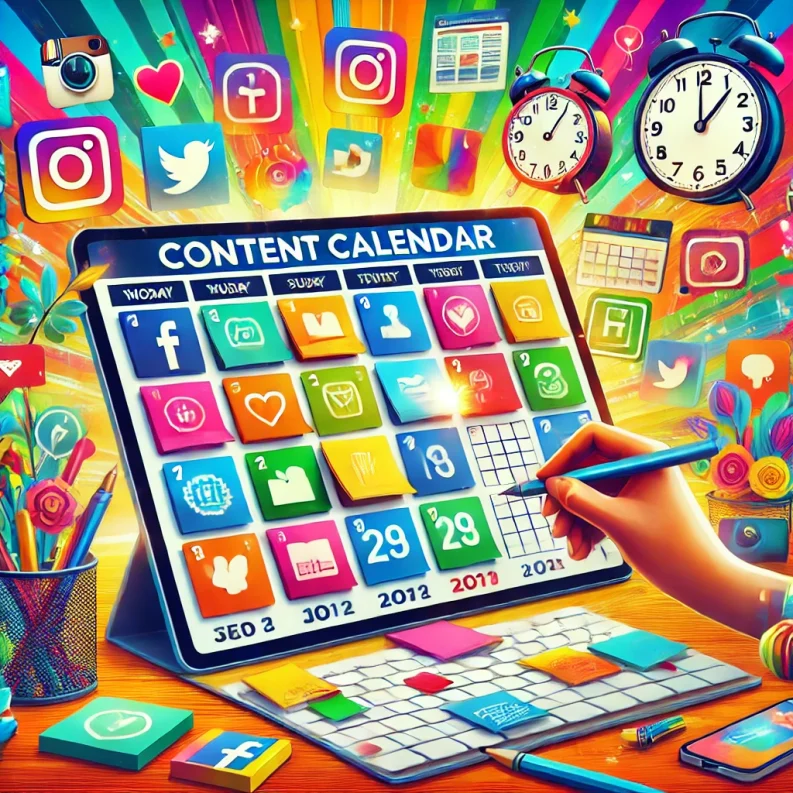Creating a content calendar can feel like trying to herd cats while riding a unicycle—challenging, chaotic, and potentially embarrassing if you fall off. But fear not! With a little organization and a sprinkle of humor, you can build a content calendar that keeps you sane and your content flowing smoothly. Let’s dive into how to create a killer content calendar without losing your mind!
Why You Need a Content Calendar
First things first, why should you bother with a content calendar? Well, think of it as your trusty sidekick in the wild world of content creation. Here are some reasons you should embrace the calendar life:
- Stay Organized: A content calendar helps you keep track of what to post and when, so you won’t be scrambling at the last minute.
- Maintain Consistency: Regular posting is key to engaging your audience. A calendar ensures you’re not ghosting your followers.
- Plan Ahead: With a calendar, you can plan for holidays, events, or trending topics, ensuring your content is timely and relevant.
- Collaborate Effectively: If you’re working with a team, a shared calendar keeps everyone on the same page—no more “I thought you were posting that!” drama.
Step 1: Define Your Goals
Before you start filling in dates and topics, take a moment to define what you want to achieve with your content. Are you looking to increase website traffic? Generate leads? Become the next viral sensation? Whatever it is, having clear goals will guide your content creation process and help you measure success later on.
Step 2: Choose Your Platforms
Not all platforms are created equal. Depending on your audience and goals, you may want to focus on specific channels like:
- Social Media: Facebook, Instagram, Twitter, LinkedIn
- Blogs: Company blog or guest posts
- Email Newsletters: Regular updates for subscribers
- Podcasts or Videos: Engaging audio or visual content
Knowing where your audience hangs out will help tailor your content accordingly.
Step 3: Create Your Calendar Template
You can go old-school with pen and paper or use digital tools like Google Sheets or project management software like Trello or Asana. Here’s what to include in your template:
- Publish Date: When will the content go live?
- Content Type: Is it a blog post, social media update, video, etc.?
- Topic/Title: What’s the focus of the piece?
- Owner/Author: Who’s responsible for creating it?
- Status: Is it in progress, scheduled, or published?
By having these elements clearly laid out, you’ll avoid confusion and keep everything organized.
Step 4: Brainstorm Content Ideas
Now comes the fun part—brainstorming! Gather your team (or just yourself with a cup of coffee) and start jotting down ideas. Use tools like:
- Keyword Research Tools: Find out what people are searching for.
- Social Listening Tools: See what topics are trending in your industry.
- Competitor Analysis: What’s working for others? Don’t copy them—get inspired!
Aim for a mix of evergreen content (that’s always relevant) and timely pieces (like holiday-themed posts).
Step 5: Schedule Your Content
With your ideas in hand, it’s time to fill in the calendar! Be realistic about how often you can post. If you’re just starting out, aim for consistency over quantity. It’s better to post once a week than to burn out trying to post daily.
Pro Tip:
Use color coding! Assign different colors for different types of content or platforms. It makes the calendar visually appealing and easier to navigate.
Step 6: Monitor and Adjust
Once your calendar is up and running, don’t forget to monitor its performance. Use analytics tools to track engagement and see what types of content resonate most with your audience. Be prepared to adjust your strategy based on what works (and what doesn’t). Flexibility is key!
Common Pitfalls to Avoid
Even with the best intentions, there are some common mistakes that can derail your content calendar efforts:
- Overloading Your Schedule: Avoid cramming too much into one week. Quality over quantity!
- Ignoring Analytics: If something isn’t working, don’t be afraid to pivot.
- Neglecting Team Communication: Keep everyone informed about changes or updates to the calendar.
- Being Inflexible: Sometimes news breaks or trends emerge that require immediate attention—be ready to adapt!
Conclusion
Building a content calendar doesn’t have to be an overwhelming task that drives you up the wall. With clear goals, organized planning, and a bit of creativity, you can create a roadmap that keeps your content flowing smoothly while keeping your sanity intact.So grab that digital tool (or trusty spreadsheet), gather those ideas, and get ready to conquer the world of content—one scheduled post at a time!







